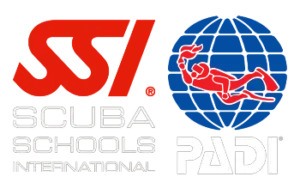The global diving community has long recognized SSI (Scuba Schools International) and PADI (Professional Association of Diving Instructors) as the two dominant organizations in dive education and certification. However, recent changes in their competitive landscape are impacting the industry, particularly for dive businesses operating in Europe. Here, we explore the current dynamics between these two organizations, their effect on dive centers, and what the future might hold for professionals and businesses in the sector.
Current Landscape
Market Strategies
PADI, traditionally the market leader, has maintained its dominance through a strong global brand and an extensive network of affiliated dive centers. Its “PADI Worldwide” slogan emphasizes its ubiquitous presence, with significant investments in marketing ensuring it remains the default choice for new divers. Conversely, SSI has significantly gained ground by adopting a more flexible and often more cost-effective approach for both dive centers and instructors. SSI’s integration of digital learning platforms and its willingness to adapt to local markets have made it an attractive alternative.
Diving Certifications
Both organizations offer standardized certifications, such as Open Water Diver, Advanced Diver, and specialty courses. However, SSI’s streamlined administrative processes and competitive pricing have increasingly appealed to new operators and existing dive centers looking to maximize profitability. While PADI remains the largest organization, it has faced criticism for higher fees and stricter protocols, which can be burdensome for smaller businesses.
Impact on European Diving Businesses
Cost Structures
European dive centers, particularly those in countries with seasonal tourism like Spain, Italy, and Greece, are highly sensitive to costs. Reduced fees for instructors and fewer equipment rental requirements offered by SSI provide a clear financial advantage. This has led some centers to switch affiliations or offer certifications from both organizations to appeal to a broader customer base.
Brand Recognition
PADI’s strong brand recognition remains a key asset, particularly among tourists and first-time divers. For many, a PADI certification is synonymous with quality and global acceptance, making it a safe choice. On the other hand, SSI’s growing popularity is beginning to erode PADI’s monopoly in consumers’ minds, with many divers now understanding that certifications from both agencies are widely recognized and interchangeable.
Instructor Preferences
Instructors often determine the certification agency based on training quality, costs, and professional flexibility. SSI’s instructor-friendly policies, such as crossover programs and less stringent renewal fees, have attracted a wave of professionals to its system. This has direct implications for dive businesses, as instructors play a critical role in a center’s reputation and training offerings.
Future Perspectives
Potential Market Fragmentation
The ongoing rivalry between SSI and PADI could lead to greater market fragmentation, with smaller agencies like RAID, NAUI, and CMAS gaining ground by positioning themselves as alternatives to the “big two.” This could increase competition but also complicate consumer choices.
Training Innovation
As digital learning becomes the norm, both SSI and PADI are likely to invest more in online education platforms. SSI’s initial advantage in digital integration suggests it may maintain a lead unless PADI significantly modernizes its approach.
Implications for Dive Centers
European dive centers will need to adapt by diversifying their offerings and aligning with the certification agency that best meets their financial and operational needs. Centers that can cater to multiple agencies may benefit the most, attracting a broader range of divers and minimizing reliance on a single organization.
Regulatory Influence
European regulations on safety and the environment are becoming increasingly strict, potentially influencing certification standards. Agencies that can quickly adapt to these changes while maintaining economic accessibility are likely to gain favor.
Conclusion
The evolving relationship between SSI and PADI is reshaping the diving industry, particularly in Europe, where businesses must balance cost efficiency with brand reputation. While PADI’s recognition remains strong, SSI’s adaptability and competitive pricing are challenging the status quo. The future will depend on how both organizations innovate and respond to market demands, but for dive centers, the priority remains clear: flexibility, quality, and aligning with customer preferences will be key to thriving in this dynamic landscape.
TAGS: Diving courses Malta , Corsi di immersione a Malta , Cours de plongée à Malte, Tauchkurse Mal, Ok Diving Malta








